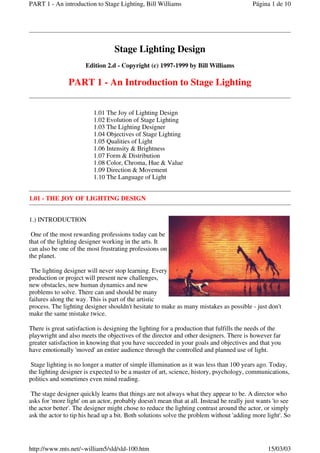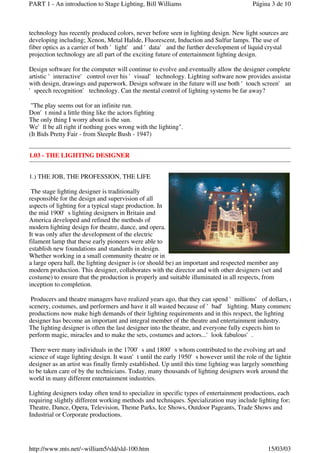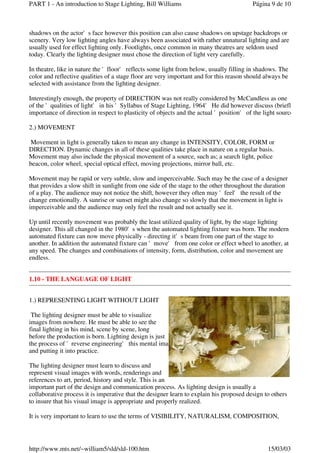This document provides an introduction to stage lighting design. It discusses the evolution of stage lighting from early Greek theaters using natural light to modern developments using various artificial light sources. It describes the role of the lighting designer and their objectives in creating visibility, naturalism, composition, and mood through manipulating the qualities of light including intensity, form, color, direction and movement. The document also covers topics such as the physical and psychological properties of light, and defines key lighting terms including intensity, illumination, and brightness.









